1. Das N, Panjabi M. Plagiarism: Why is it such a big issue for medical writers? Perspect Clin Res. 2011; 2(2):67–71. PMID:
21731858.
2. Zimba O, Gasparyan AY. Plagiarism detection and prevention: a primer for researchers. Reumatologia. 2021; 59(3):132–137. PMID:
34538939.
3. Sharma BB, Singh V. Ethics in writing: learning to stay away from plagiarism and scientific misconduct. Lung India. 2011; 28(2):148–150. PMID:
21712931.
5. Helgesson G, Eriksson S. Plagiarism in research. Med Health Care Philos. 2015; 18(1):91–101. PMID:
24993050.
6. Resnik DB, Dinse GE. Scientific retractions and corrections related to misconduct findings. J Med Ethics. 2013; 39(1):46–50. PMID:
22942373.
7. Chaddah P. Not all plagiarism requires a retraction. Nature. 2014; 511(7508):127. PMID:
25008489.
8. Heitman E, Litewka S. International perspectives on plagiarism and considerations for teaching international trainees. Urol Oncol. 2011; 29(1):104–108. PMID:
21194646.
9. Agrawal R. Plagiarism. Indian J Pathol Microbiol. 2020; 63(2):175–176. PMID:
32317511.
10. Gasparyan AY, Nurmashev B, Seksenbayev B, Trukhachev VI, Kostyukova EI, Kitas GD. Plagiarism in the context of education and evolving detection strategies. J Korean Med Sci. 2017; 32(8):1220–1227. PMID:
28665055.
11. Chien SC. Cultural constructions of plagiarism in student writing: teachers’ perceptions and responses. Res Teach Engl. 2014; 49(2):120–140.
12. Fang FC, Steen RG, Casadevall A. Misconduct accounts for the majority of retracted scientific publications. Proc Natl Acad Sci U S A. 2012; 109(42):17028–17033. PMID:
23027971.
13. Amos KA. The ethics of scholarly publishing: exploring differences in plagiarism and duplicate publication across nations. J Med Libr Assoc. 2014; 102(2):87–91. PMID:
24860263.
14. Stretton S, Bramich NJ, Keys JR, Monk JA, Ely JA, Haley C, et al. Publication misconduct and plagiarism retractions: a systematic, retrospective study. Curr Med Res Opin. 2012; 28(10):1575–1583. PMID:
22978774.

16. Yang F, Shaw A, Garduno E, Olson KR. No one likes a copycat: a cross-cultural investigation of children’s response to plagiarism. J Exp Child Psychol. 2014; 121:111–119. PMID:
24473471.
17. Liao QJ, Zhang YY, Fan YC, Zheng MH, Bai Y, Eslick GD, et al. Perceptions of Chinese biomedical researchers towards academic misconduct: a comparison between 2015 and 2010. Sci Eng Ethics. 2018; 24(2):629–645. PMID:
28397174.
18. Yi N, Nemery B, Dierickx K. Integrity in biomedical research: a systematic review of studies in China. Sci Eng Ethics. 2019; 25(4):1271–1301. PMID:
29721845.

19. Yi N, Nemery B, Dierickx K. Perceptions of plagiarism by biomedical researchers: an online survey in Europe and China. BMC Med Ethics. 2020; 21(1):44. PMID:
32487190.

20. Li D, Cornelis G. Differing perceptions concerning research misconduct between China and Flanders: a qualitative study. Account Res. 2021; 28(2):63–94. PMID:
32718198.

21. Palla IA, Singson M, Thiyagarajan S. A comparative analysis of retracted papers in health sciences from China and India. Account Res. 2020; 27(7):401–416. PMID:
32279538.

22. Li Y. Text-based plagiarism in scientific writing: what Chinese supervisors think about copying and how to reduce it in students’ writing. Sci Eng Ethics. 2013; 19(2):569–583. PMID:
22212356.

23. Bi X, Tang X, Fan X. Academic misconduct of graduates and the credit education. Zhong Nan Da Xue Xue Bao Yi Xue Ban. 2011; 36(10):1021–1024. PMID:
22086012.
24. Shen Y, Hu G. Chinese graduate students’ perceptions of plagiarism: a mixed-methods study. Account Res. 2021; 28(4):197–225. PMID:
32877216.

25. Yu L, Miao M, Liu W, Zhang B, Zhang P. Scientific misconduct and associated factors: a survey of researchers in three Chinese tertiary hospitals. Account Res. 2021; 28(2):95–114. PMID:
32783533.

26. Dhingra D, Mishra D. Publication misconduct among medical professionals in India. Indian J Med Ethics. 2014; 11(2):104–107. PMID:
24727622.

27. Raj JP, Venkatachalam S, Amaravati RS, Siby N, Oommen AM, Jose JE, et al. Extent of awareness and attitudes on plagiarism among post-graduate resident doctors and junior medical faculty in India: a cross-sectional, multicentric study. BMJ Open. 2021; 11(6):e046904.

28. Varghese J, Jacob M. Do medical students require education on issues related to plagiarism? Indian J Med Ethics. 2015; 12(2):82–87. PMID:
25671582.
29. Jain S, Saxena V, Hongal S, Jain M, Torwane N, Sharva V. Comparison of opinion referendum of medical and dental postgraduates towards plagiarism in Bhopal - Central India. J Coll Physicians Surg Pak. 2015; 25(7):514–518. PMID:
26208556.
30. Singh SP, Dhir SK, Sharma M, Singh T. Publication misconduct: perceptions of participants of a faculty development programme. Natl Med J India. 2018; 31(3):169–171. PMID:
31044767.

31. Shirazi B, Jafarey AM, Moazam F. Plagiarism and the medical fraternity: a study of knowledge and attitudes. J Pak Med Assoc. 2010; 60(4):269–273. PMID:
20419968.
32. Ghias K, Lakho GR, Asim H, Azam IS, Saeed SA. Self-reported attitudes and behaviours of medical students in Pakistan regarding academic misconduct: a cross-sectional study. BMC Med Ethics. 2014; 15(1):43. PMID:
24885991.

33. Mubeen SM, Ghayas R, Adil Rizvi SH, Khan SA. Qurrat-ul-Ain. Knowledge of scientific misconduct in publication among medical students. Educ Health (Abingdon). 2017; 30(2):140–145. PMID:
28928344.
34. Olesen AP, Amin L, Mahadi Z. In their own words: research misconduct from the perspective of researchers in Malaysian universities. Sci Eng Ethics. 2018; 24(6):1755–1776. PMID:
29249021.

35. Olesen AP, Amin L, Mahadi Z. Researchers experience of misconduct in research in Malaysian higher education institutions. Account Res. 2018; 25(3):125–141. PMID:
29394103.
36. Khadilkar SS. The plague of plagiarism: prevention and cure!!! J Obstet Gynaecol India. 2018; 68(6):425–431. PMID:
30416266.

37. Hong ST. Plagiarism continues to affect scholarly journals. J Korean Med Sci. 2017; 32(2):183–185. PMID:
28049227.

38. Mehta P, Mukherjee S. Plagiarism and its repercussions: a primer on responsible scientific writing. Cent Asian J Med Hypotheses Ethics. 2022; 3(1):52–62.
39. Gupta L, Tariq J, Yessirkepov M, Zimba O, Misra DP, Agarwal V, et al. Plagiarism in non-anglophone countries: a cross-sectional survey of researchers and journal editors. J Korean Med Sci. 2021; 36(39):e247. PMID:
34636502.

40. Abbasi P, Yoosefi-Lebni J, Jalali A, Ziapour A, Nouri P. Causes of the plagiarism: a grounded theory study. Nurs Ethics. 2021; 28(2):282–296. PMID:
32909912.

42. Luther F. Scientific misconduct: tip of an iceberg or the elephant in the room? J Dent Res. 2010; 89(12):1364–1367. PMID:
20940367.
43. Misra DP, Ravindran V, Wakhlu A, Sharma A, Agarwal V, Negi VS. Plagiarism: a viewpoint from India. J Korean Med Sci. 2017; 32(11):1734–1735. PMID:
28960022.

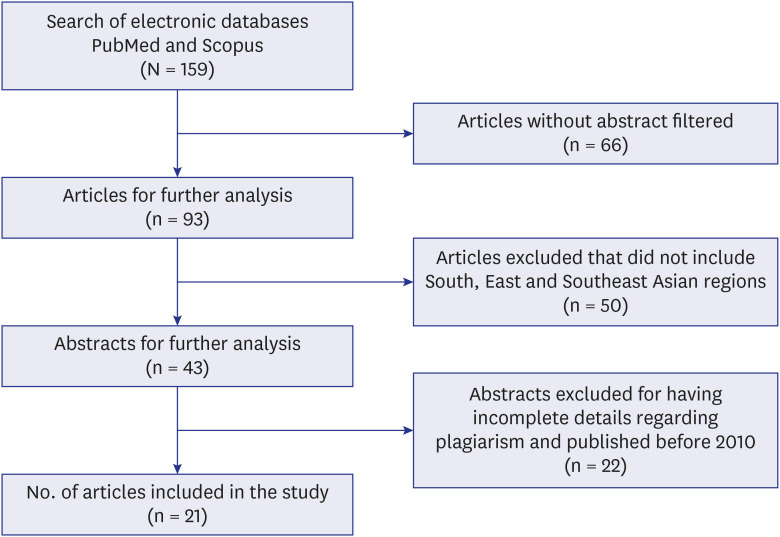
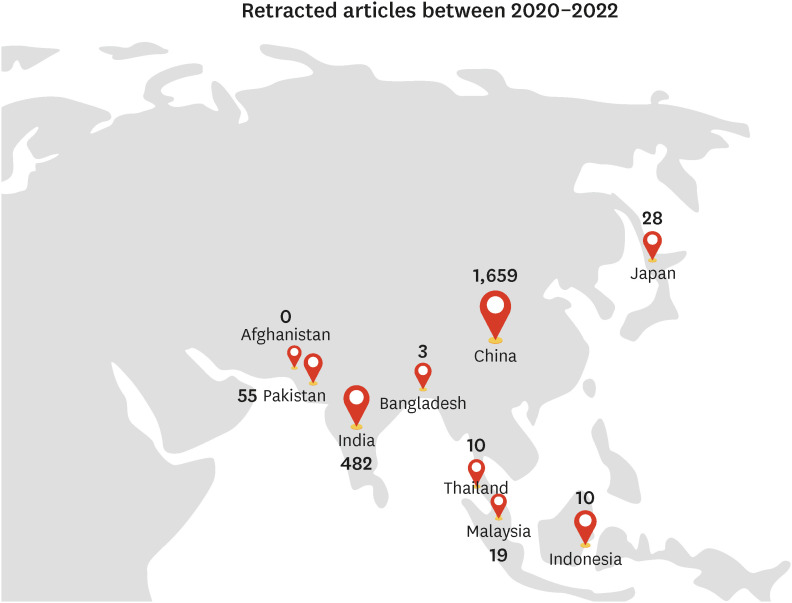
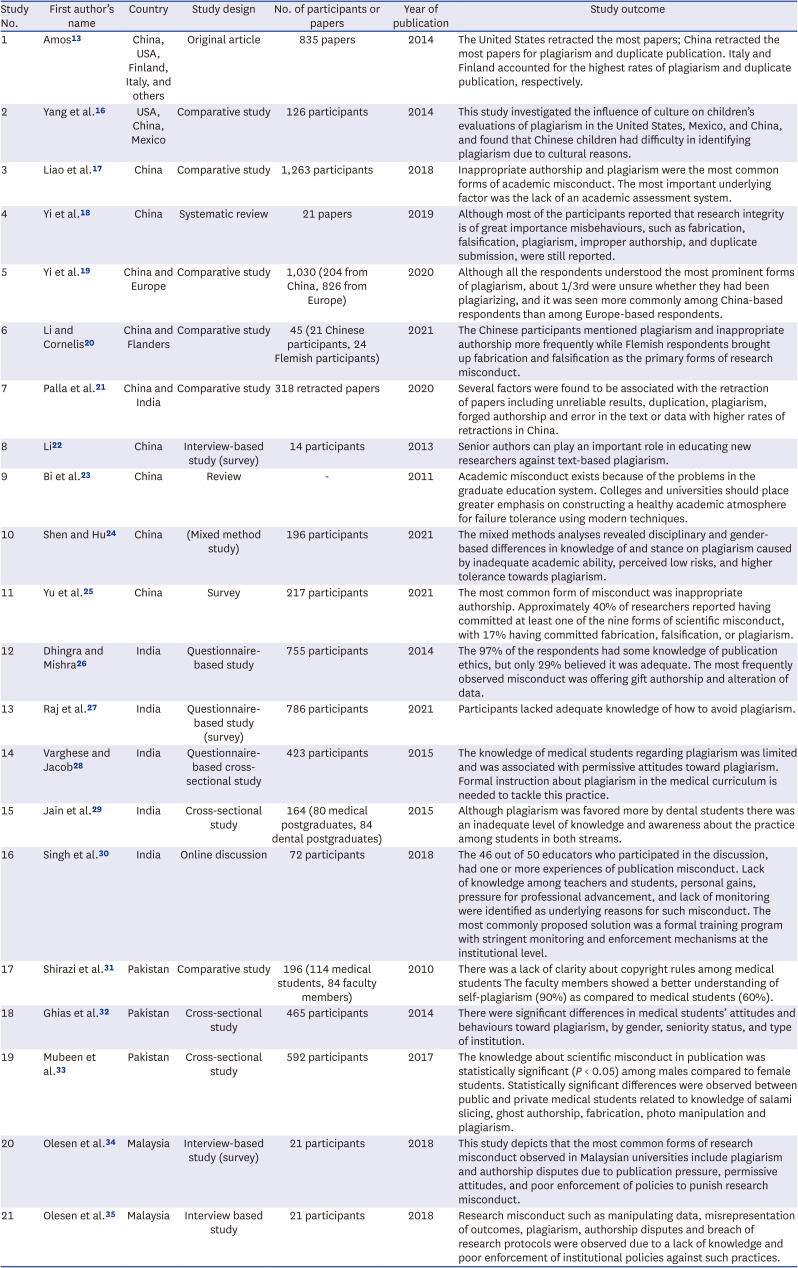




 PDF
PDF Citation
Citation Print
Print



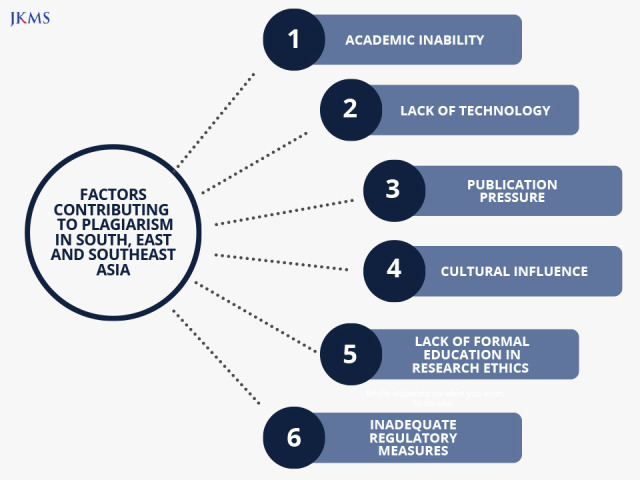
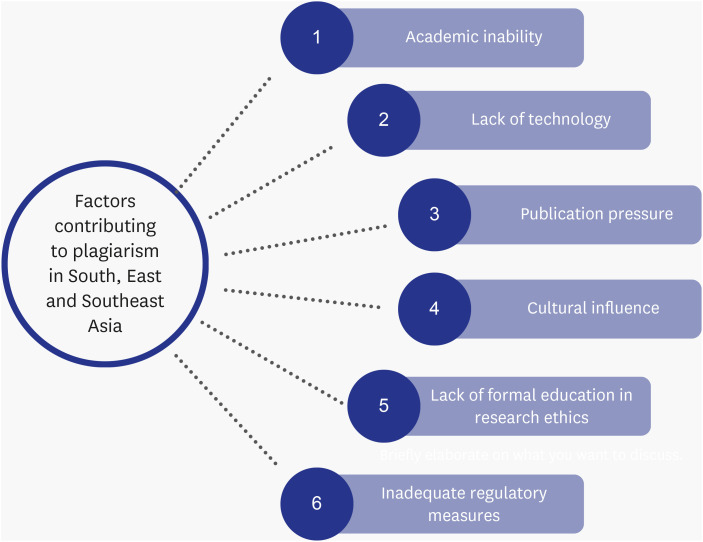
 XML Download
XML Download